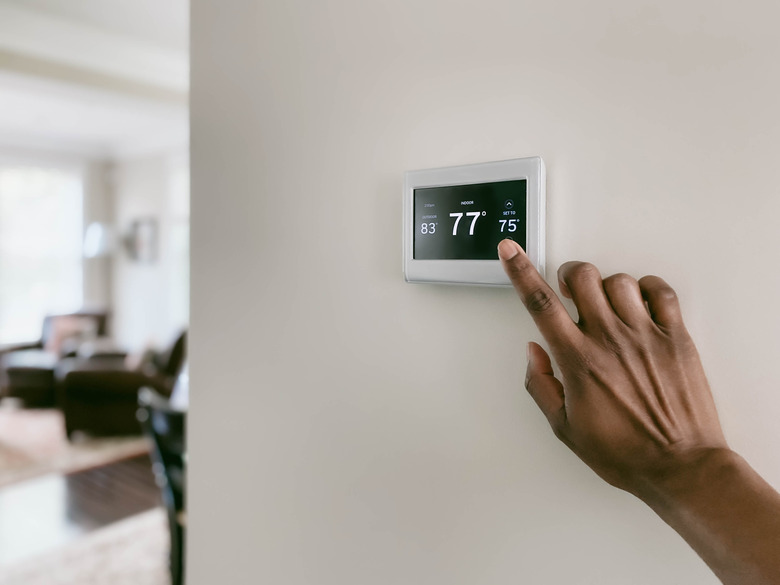How To Adjust The A/C Flow To Upstairs
Central air conditioners distribute cooled air in buildings through fans and ducts, but you may need to adjust the A/C flow to upstairs if you wake up freezing or overheating in the middle of the night. This often happens when homeowners use their HVAC systems for the first time in a season. You might have to do some fine-tuning until the flow and temperature are right.
Parts of Your A/C System
Understanding the parts of your A/C system will help you troubleshoot the airflow issues you are having upstairs. Classic central air systems are called "split units." They have compressors plus condensers outside the building with evaporator coils inside. These systems normally use the same air handler as the furnace. If it is a packaged unit, the compressor, condenser and air handler are located together, typically outside.
Central air conditioning systems are regulated by thermostats. Smart thermostats increase efficiency and are easy to use. Your system may also include remote temperature sensors and/or motion sensors. These upgrades help the system cool the house as a single unit. Older models adjust the temperature to where the thermostat is located.
Balancing dampers and balancing air registers are two different things. Registers look like small grills, and you can find them on ceilings and walls. They can be opened or closed, but this may not solve your problem of uneven cooling. Dampers open and close ducts, and they are located in the ductwork.
Adjusting the A/C Flow Upstairs
Ductwork is used in heating, ventilation and air conditioning (HVAC) systems. These passages transport the air throughout a building. The dampers in ductwork are small doors that mechanically or manually open and close to adjust the amount of air going into the different rooms. You may be able to see the damper handles inside your ductwork.
If you are struggling with uneven cooling, opening or closing damper doors allows you to balance the airflow in your home. This can be one technique to adjust the airflow to the upstairs. First, you need to locate them, though. Sometimes, they are situated near the air conditioner or furnace, or they could be farther away.
If the second-floor bedroom is too warm when the A/C is on, open the dampers on your second-floor vents. Then, leave the first-floor vents partially open. This should allow more cool air to flow into your second-floor rooms. If the home has only one floor, you can adjust the vents for the different rooms. Some homes have top/bottom return vents, so in these cases, you can open the top vents when needed.
Sealing Exposed Ductwork
Leaky ductwork can also affect the A/C flow in a building. If rooms are hard to cool, if they feel stuffy or dusty and/or if you have high summer utility bills, some repairs may be in order. If you see lines of dirt in the ducts or gaps or holes in the tubing, you probably have leaks in the ducts.
Find out how you can access the ducts through your attic, crawl space or basement. Then, see if they are made from flexible tubing, fiberglass or sheet metal. Use foil HVAC tape for fiberglass, flat metal and flexible ducts. Use liquid rubber sealant for oddly shaped metal joints.
After you have the supplies on hand, put on safety goggles and a respirator mask. Vacuum out the ducts as best you can and wipe them off with soapy water. Apply the tape to the exposed seams and wrap it around the ducts at the joints. When using sealant, brush it onto the ducts over the joints and out 2 inches. Work it in and give it 24 hours to dry completely.
